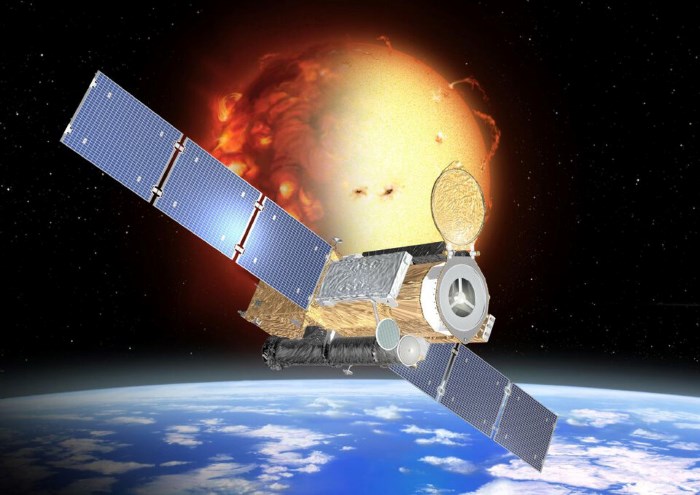After the successful landing of Chandrayaan-3, ISRO is determined and ready for its next mission to explore the sun. With Aditya L-1 launching on September 2, 2023, ISRO will be marking another victorious chapter in its history.
India won’t be the first one to explore the sun. Many missions have been launched to determine solar activities. Here is a list of solar missions that have been conducted since the year 2000:
| Mission Name | Launch Year |
| SOHO | 1995 |
| STEREO | 2006 |
| Hinode (Solar-B) | 2006 |
| SDO | 2010 |
| IRIS | 2013 |
| Solar Orbiter | 2020 |
| Parker Solar Probe | 2018 |
SOHO (Solar and Heliospheric Observatory) is a joint mission by the European Space Agency (ESA) and NASA. It was launched in December 1995 and is still operational today
NASA mentions: “SOHO is a cooperative international project between ESA and NASA. NASA contributed three instruments and launch services. ESA leads the mission.”.
SOHO's main objective is to study the Sun's interior, outer atmosphere, and solar wind. It has made many important discoveries, including the discovery of the solar cycle, the study of coronal holes, and the observation of solar flares and coronal mass ejections.

Source: NASA
STEREO (Solar Terrestrial Relations Observatory) is a NASA mission that was launched in October 2006. STEREO consists of two spacecraft, STEREO-A and STEREO-B, which are positioned ahead of and behind the Earth in orbit around the Sun.
NASA mentions: “Launched in October 2006, the Solar Terrestrial Relations Observatory, or STEREO, has provided scientists a unique and revolutionary view of the Sun-Earth System. Composed of two nearly identical observatories -- one ahead of Earth in its orbit, the other trailing behind -- STEREO has traced the flow of energy and matter from the Sun to Earth.”
STEREO's main objective is to study solar phenomena, including coronal mass ejections, by providing stereoscopic observations of the Sun.
The space agency lost connection with STEREO-B on October 1, 2004 however, STEREO-A continues to work properly.
Hinode (Solar-B) is a Japanese mission that was launched in September 2006. This was a follow up mission after Japan’s YOHKOH (Solar-A) mission in 1991. The mission is led by Japan Aerospace Exploration Agency (JAXA).
The European Space Agency mentions: “Hinode is a follow-up of the successful Japanese YOHKOH (Solar-A) mission, which was launched in August 1991 in an international effort involving Japan, the United States and the United Kingdom. Its X-ray images of the Sun helped redrawing the general perception of our daylight star.”
Hinode's main objective is to study the Sun's magnetic field and its influence on the solar atmosphere.
Hinode has made many important discoveries, including the observation of the Sun's magnetic dynamo and the study of the interaction between the solar magnetic field and the solar wind.

Source: The European Space Agency
SDO (Solar Dynamics Observatory) is a NASA mission that was launched in February 2010. SDO's main objective is to observe the Sun in various wavelengths to understand its magnetic field, solar activity, and influence on space weather.
SDO has made many important discoveries, including the observation of the Sun's magnetic cycles and the study of solar flares and coronal mass ejections.
NASA mentions: “SDO studies how solar activity is created and drives space weather. The spacecraft’s measurements of the Sun’s interior, atmosphere, magnetic field, and energy output all work to help us understand the star we live with”

Source: NASA Scientific Visualisation Studio
IRIS (Interface Region Imaging Spectrograph) is a NASA mission that was launched in June 2013. IRIS's main objective is to study how solar materials gather energy.
NASA states: “The Interface Region Imaging Spectrograph observes how solar material moves, gathers energy, and heats up as it travels through a little-understood region in the Sun's lower atmosphere. IRIS is a key part of NASA's Sun-watching fleet -- tracking how material and energy move through this region to help us understand the dynamics of our star.”
IRIS has made many important discoveries, including the observation of the Sun's spicules and the study of the interaction between the solar atmosphere and the solar wind.

Source: NASA
Solar Orbiter is a joint mission by ESA and NASA that was launched in February 2020. Solar Orbiter's main objective is to study the Sun's polar regions and the solar wind to understand the Sun-Earth connection.
The European Space Agency mentions: “Solar Orbiter is the most complex scientific laboratory ever to have been sent to the Sun. Although our life-giving star has been an object of scientific interest for centuries, its behaviour still presents a puzzle for scientists. Solar Orbiter will take images of the Sun from closer than any spacecraft before and for the first time look at its uncharted polar regions.”
The Solar Orbiter will fly closer to the Sun than any previous mission, providing unprecedented views of the Sun's atmosphere and magnetic field.

Source: NASA Science
Parker Solar Probe is a NASA mission that was launched in August 2018. Parker Solar Probe's main objective is to approach the Sun closer than any previous mission, studying its outer atmosphere and solar wind.
NASA states: “Parker Solar Probe is on a mission to "touch the Sun." The spacecraft is flying closer to the Sun’s surface than any spacecraft before it. The mission will revolutionize our understanding of the Sun.”
Parker Solar Probe will fly within 3.9 million miles (6.2 million kilometres) closer to the Sun, making it the first mission to ever do so.

Source: NASA
Comments
All Comments (0)
Join the conversation